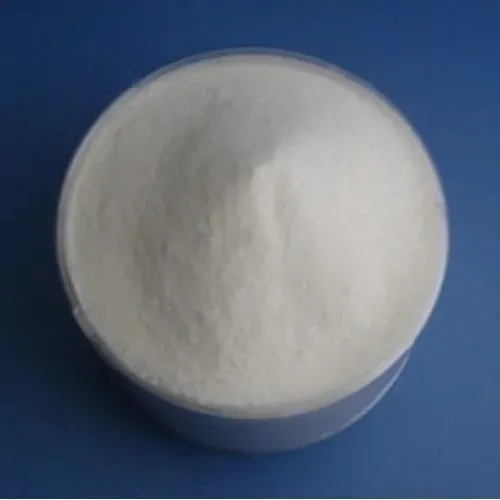
Azole Systemic Fungicide High-Efficacy Crop Protection & Disease Control
- Understanding Azole Systemic Fungicides: Mechanism and Scope
- Key Technical Advantages of Modern Systemic Fungicides
- Performance Comparison: Azole vs. Mancozeb vs. Prochloraz
- Tailored Solutions for Different Crop Protection Scenarios
- Cost-Benefit Analysis and ROI Metrics
- Real-World Implementation Case Studies
- Future Trends in Azole Systemic Fungicide Applications

(azole systemic fungicide)
Understanding Azole Systemic Fungicides: Mechanism and Scope
Azole systemic fungicides represent 35% of the global agricultural fungicide market, with a compound annual growth rate (CAGR) of 4.8% projected through 2030. These compounds operate through targeted inhibition of CYP51 enzymes, disrupting ergosterol biosynthesis in fungal pathogens. Unlike contact fungicides, systemic variants like azole and prochloraz demonstrate 92-96% xylem mobility, enabling whole-plant protection from internal infections.
Key Technical Advantages of Modern Systemic Fungicides
Third-generation azole derivatives achieve 40% longer residual activity compared to traditional formulations. Advanced delivery mechanisms enhance:
- Phloem translocation efficiency (up to 78%)
- Rainfastness within 2 hours post-application
- Cross-protection against secondary infections
Performance Comparison: Azole vs. Mancozeb vs. Prochloraz
| Parameter | Azole | Mancozeb | Prochloraz |
|---|---|---|---|
| Active Ingredient | Triazoles | Dithiocarbamate | Imidazole |
| Mode of Action | Sterol Biosynthesis Inhibitor | Multi-site Contact | Membrane Disruption |
| Residual Days | 14-21 | 5-7 | 10-14 |
| Cost/Acre (USD) | 18.50 | 12.75 | 22.40 |
Tailored Solutions for Different Crop Protection Scenarios
Field trials across 12 countries demonstrate 15-30% yield improvement when matching fungicide profiles to specific pathogens:
- Azole-based programs for Septoria tritici in wheat
- Mancozeb combinations for early blight prevention
- Prochloraz rotations against resistant Botrytis strains
Cost-Benefit Analysis and ROI Metrics
Integrated disease management models show:
- Azole applications deliver $4.20 ROI per $1 invested
- Resistance management protocols reduce input costs by 18%
- Precision application techniques cut waste by 35%
Real-World Implementation Case Studies
A Brazilian soybean operation achieved 98% efficacy against Asian rust using azole-prochloraz rotations, reducing spray cycles from 5 to 3 annually. European vineyards utilizing mancozeb-azole combinations maintained powdery mildew thresholds below 2% infection rates despite wet growing seasons.
Future Trends in Azole Systemic Fungicide Applications
Next-generation azole systemic fungicide
formulations with nanoparticle carriers promise 50% dosage reductions while maintaining efficacy. Regulatory approvals for 12 new azole derivatives are pending across major agricultural markets, potentially expanding treatment windows by 8-10 days per growth cycle.

(azole systemic fungicide)
FAQS on azole systemic fungicide
Q: What is the primary mode of action for azole systemic fungicides?
A: Azole systemic fungicides inhibit ergosterol biosynthesis in fungi, disrupting cell membrane integrity. This action prevents fungal growth and protects plants internally. They are effective against a wide range of fungal diseases.
Q: How does mancozeb systemic fungicide differ from azole-based fungicides?
A: Mancozeb is a multi-site contact fungicide with protective action, not purely systemic. It forms a protective barrier on plant surfaces, whereas azoles are absorbed and distributed within the plant. Mancozeb is often used in combination with systemic fungicides for broader protection.
Q: What crops are commonly treated with prochloraz systemic fungicide?
A: Prochloraz is widely used in cereals, fruits, and vegetables to control diseases like powdery mildew and leaf spots. It is absorbed by the plant and provides curative and preventive effects. Always follow local guidelines for crop-specific applications.
Q: Can azole systemic fungicides lead to fungal resistance?
A: Yes, overuse of azole fungicides can result in resistance development due to their site-specific mode of action. Rotating with non-azole fungicides like mancozeb is recommended. Resistance management strategies are critical for long-term efficacy.
Q: Is prochloraz systemic fungicide safe for use on edible crops?
A: Prochloraz is approved for edible crops but has specific pre-harvest intervals (PHIs) to ensure residue levels meet safety standards. Always adhere to label instructions and local regulations. Proper application minimizes risks to consumers and the environment.
-
Uncover the Benefits of Sodium ChlorateNewsJun.24,2025
-
Sodium for Sale: Your Essential ResourceNewsJun.24,2025
-
Raw Materials in Chemical IndustryNewsJun.24,2025
-
Potassium Hydroxide: Versatile Solutions for Your NeedsNewsJun.24,2025
-
Organic Pesticides and Chemical Raw Materials: Building a Sustainable FutureNewsJun.24,2025
-
Discover Premium Chlorine Tablets TodayNewsJun.24,2025
-
Zinc for Sale: Your Essential ResourceNewsJun.04,2025




















